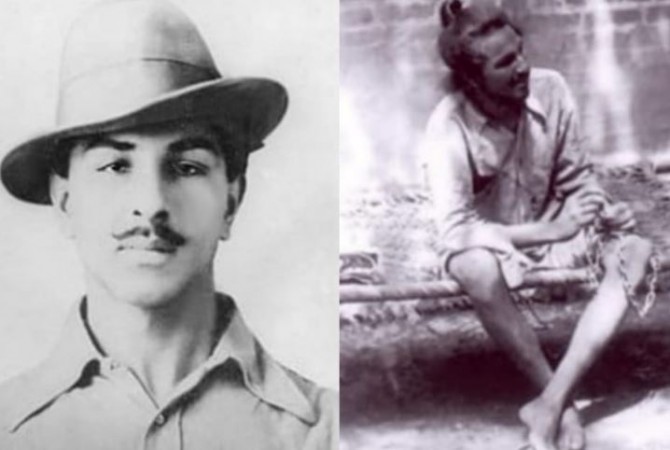
In the annals of India's fight for freedom, one name stands out as a beacon of youthful fervor and unwavering dedication – Bhagat Singh. A charismatic and fiery revolutionary, Singh's indomitable spirit and daring actions made him a symbol of the youth's unyielding desire for independence. As a prominent member of the Hindustan Socialist Republican Association (HSRA), he left an indelible mark on the struggle for India's liberation.
The Fire of Revolution: A Youth Icon Emerges:
Bhagat Singh, born in 1907 in Punjab, emerged as a charismatic youth icon with a burning passion for India's freedom. Inspired by his family's patriotic values and the injustices of British colonial rule, he joined the HSRA, a radical group committed to overthrowing the British regime through revolutionary means.
The Lahore Conspiracy Case:
Singh's path to national recognition took a decisive turn with the Lahore Conspiracy Case. Alongside his associates Rajguru and Sukhdev, he was implicated in the assassination of John Saunders, a British police officer. This act was intended to avenge the death of Lala Lajpat Rai, who had been brutally assaulted during a protest against the Simon Commission. Singh and his comrades believed that targeting the responsible officials would send a powerful message of resistance against oppressive British rule.
Daring Act of Protest: The Central Legislative Assembly Bombing:
One of the most defining moments of Bhagat Singh's revolutionary journey was his audacious act at the Central Legislative Assembly. He and Batukeshwar Dutt threw non-lethal bombs in the assembly chamber to protest repressive laws and to make their voices heard by the colonial administration. While their intent was not to cause harm, their actions highlighted their unwavering commitment to challenging oppressive policies through direct action.
Martyrdom and Legacy:
Tragically, Bhagat Singh's passionate pursuit of freedom came to an untimely end. His arrest, trial, and subsequent execution in 1931 at the tender age of 23 shook the nation to its core. Singh's martyrdom, along with Rajguru and Sukhdev, left an indelible mark on the hearts of Indians. His sacrifice galvanized the nation, motivating countless individuals to carry forward the struggle for independence with renewed vigor.
A Symbol of Courage and Resilience:
Bhagat Singh's legacy extends far beyond his short life. He embodies the qualities of courage, determination, and an unyielding commitment to justice. His writings, including his famous essay on why he was willing to die for the cause of freedom, continue to inspire generations. Singh's sacrifice demonstrated that age was no barrier to making a profound impact on the course of history.
Conclusion: A Forever Young Icon:
Bhagat Singh, the youth icon of India's struggle for freedom, remains etched in the collective memory as a symbol of unwavering dedication to the cause of independence. His actions, thoughts, and sacrifices remind us that the youth have the power to shape nations and ignite change. Singh's legacy continues to inspire young minds, reminding them of the importance of resilience, fearlessness, and a relentless pursuit of justice in the journey towards a brighter and freer future.
Khadi Weaver from Varanasi to Attend PM's Speech on Independence Day